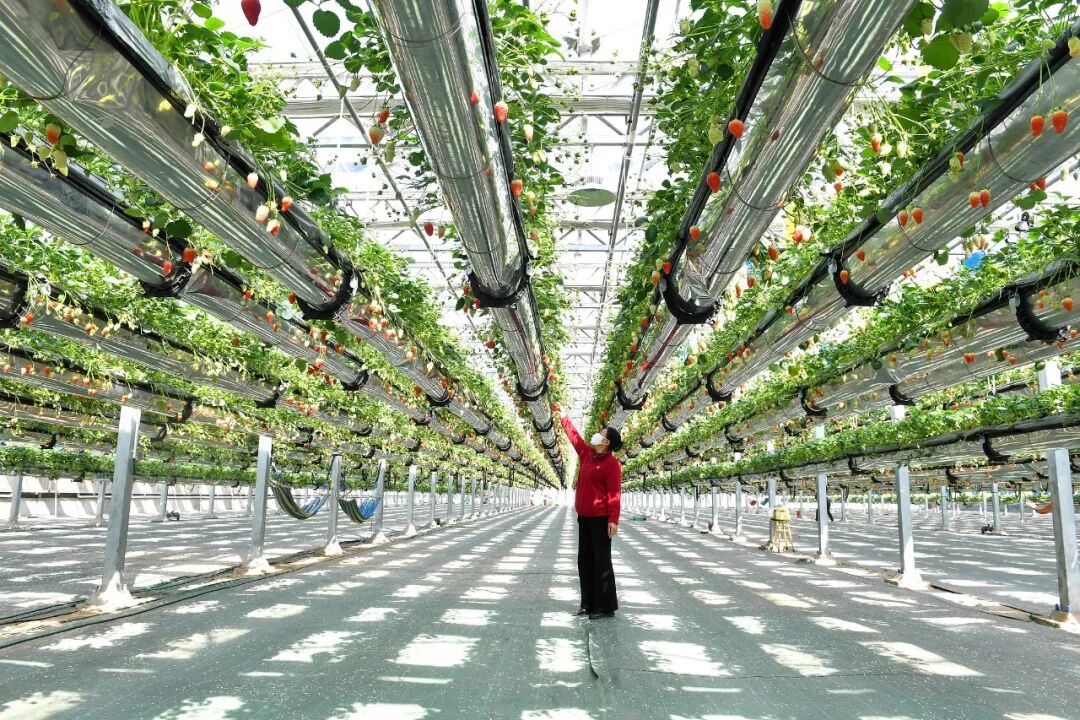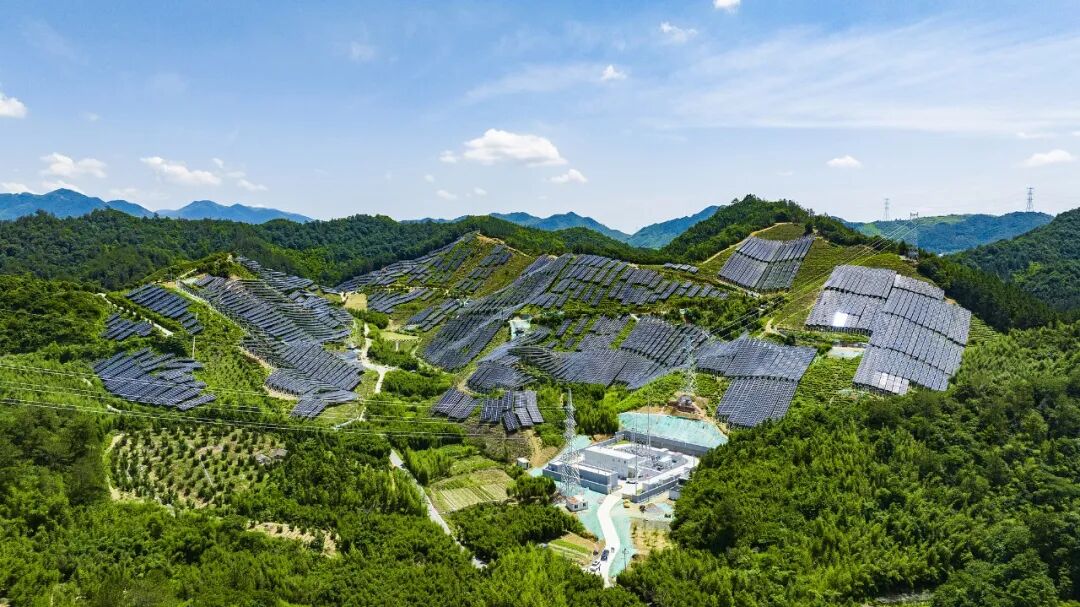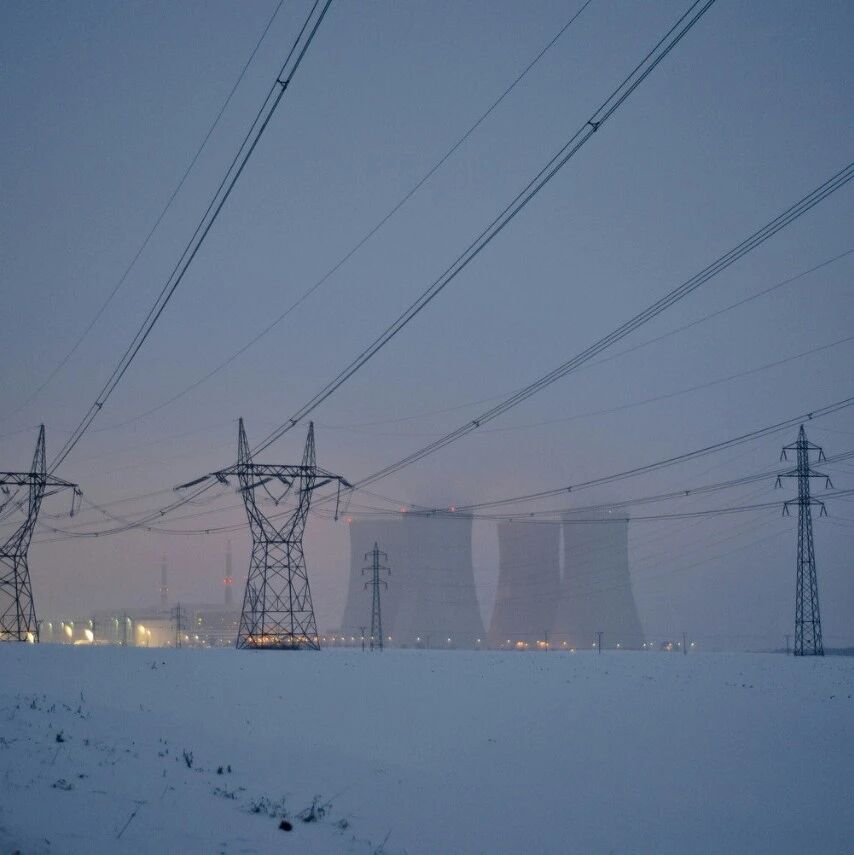

A worker inspects strawberries inside a high-tech greenhouse in Qingdao, Shandong Province, China.
Image source: CFP
Sebastian Buckup
Executive Director of the World Economic Forum
This article was originally published on CGTN.
The current unfavorable geopolitical landscape is threatening climate technology investments, even as existing investments are already beginning to yield returns. Therefore, at this critical juncture, we must not only resist political headwinds and public resistance to ambitious climate policies—but also double down on investment efforts, rather than scaling back.
Climate technology investments are driving advancements in critical sectors across multiple dimensions: they’re not only creating new market opportunities and job roles but also supporting climate restoration and ecosystem preservation. Moreover, these investments emphasize improving efficiency, leading to cost reductions and increased productivity. Overall, climate investments are empowering businesses, economies, industrial sectors, and communities to enhance their ability to adapt to a changing climate—and build greater resilience in the process.

On May 7, 2025, a researcher examined oysters in acidified saltwater at the French Institute for Ocean Development, located in Landunvez, western France.
Image source: CFP
If climate technology investments are cut at this critical juncture, not only will existing progress and the rapid cycle of innovation be stalled, but the increasingly evident positive benefits will also come under threat.
Win-win cases where sustainable technologies simultaneously create economic opportunities and deliver ecological benefits are emerging at an exponential rate. A prime example is ARC Marine, a UK-based scaling company that uses recycled materials to build artificial reefs, effectively safeguarding marine biodiversity around critical infrastructure such as cables, docks, and offshore wind turbines. To date, the company has installed more than 1,300 "reef cubes," generating 3,400 square meters of ocean habitat while recycling over 620 tons of byproduct materials.
Another exemplary case comes from Guizhou Moutai, China's leading baijiu producer. The company has innovatively adopted a "soil-to-soil" circular model, transforming by-product waste from liquor production into high-value bioproducts such as organic fertilizers, animal feed, biogas, and even collagen and biodegradable PHA materials—opening up new market opportunities for biotechnology.

On March 15, 2025, a worker inspects strawberries inside a high-tech greenhouse in Qingdao, Shandong Province, China.
Image source: CFP
We often say that climate technology can boost efficiency, leading to cost savings. And its real-world applications indeed demonstrate that climate tech can have such profound impacts. Moroccan manufacturer OCP primarily operates in Africa and Brazil. Their newly launched Tourba platform leverages satellite imagery, weather data, and soil analysis to provide small-scale farmers with tailored recommendations on fertilizers and irrigation practices. Currently, 2.5 million farmers are already benefiting from OCP’s AI-powered Pocket Agronomist and Agribooster programs, gaining access to personalized expert advice and improved market opportunities. As a result, these farmers have seen their crop yields increase by 20%, while their incomes have surged by 34%—creating a win-win scenario where both productivity and profitability soar.
Enhancing climate resilience is also a critical value dimension for clean-tech investments. Wildfire prevention stands out as a prominent example emerging in this area. AXA, the French insurance group, has developed a wildfire risk-prevention tool that leverages satellite imagery to integrate risk factors such as terrain and vegetation, combined with predictive data, providing users with constantly updated risk maps and actionable insights. Meanwhile, China’s RoboticsCats has pioneered an AI-based technology for wildlife monitoring and early wildfire detection, helping to support nature-based solutions while promoting ecosystem conservation.
Some of the most transformative changes are beyond our imagination: startups like Astroforge are working hard to develop spacecraft designed to extract and process metals in space, reducing our reliance on land-based mining—and the potential environmental damage it could cause to our planet.

On May 6, 2025, in Kathmandu, Nepal, local organizations continued their river-cleaning efforts as workers from Kathmandu City worked in the Bishnumati River.
Image source: CFP
Other innovators are also exploring new ways to produce clean energy, such as osmotic power, which could revolutionize how we harness Earth’s resources like water. Osmotic power generates a steady, renewable energy source by leveraging the natural difference in salt concentrations between freshwater and seawater. Widespread adoption of this technology could position water not as mere waste but as a strategic resource at the heart of our energy systems. This would pave the way for an interconnected framework, deeply integrating water management, energy production, and resource extraction. Of course, these groundbreaking applications are still far from commercialization—but precisely because of that, now is the critical window to ramp up investments in clean technologies. After all, clean tech is essential if we’re to develop effective solutions to the growing challenges posed by climate change.
Investment contraction not only stifles innovation but also undermines adaptation and mitigation strategies, exacerbating climate impacts and driving up costs. Since 2000, climate-related disasters have already resulted in over $3.6 trillion in economic losses. Moreover, it’s estimated that disasters threatening companies’ physical assets could lead to annual profit losses ranging from 6.6% to 7.3% by 2035.
As highlighted in the World Economic Forum’s report, "CEO Guide to Managing Climate Risk," understanding climate risks is critical for maintaining business resilience, securing competitive advantages, and unlocking opportunities—potential opportunities that could generate up to $10.1 trillion in additional business value by 2030. To achieve this, companies must integrate climate risks and opportunities into the core elements of their corporate strategies, using this framework to guide risk management as well as financial, operational, and strategic decision-making. Striking a balance between short-term profitability and long-term sustainability will require businesses to rethink how they deploy assets, manage risks and rewards in areas like investing in climate technologies, and ensure they remain competitive in the green economy. Ultimately, capital allocation should align closely with an organization’s climate risk strategy.

On June 18, 2025, a photovoltaic solar power plant in Hangzhou, Zhejiang Province, China.
Image source: CFP
There’s been much discussion about the "costs" of "going green," but it’s important to emphasize that climate action and economic growth can, in fact, go hand in hand. The CEO Climate Leaders Coalition has clearly demonstrated this: in just three years, the coalition achieved both a 10% reduction in emissions and an impressive 18% increase in total revenue.
Additionally, recent research indicates that companies tend to overestimate the costs of action while underestimating the economic losses caused by climate change. However, data shows that for every $1 invested in areas like adaptation and recovery, businesses can expect a return of $2 to $19.
The choice is clear: today’s decisive investment in climate technology will prevent us from paying a far higher price tomorrow—missed opportunities, diminished resilience, and skyrocketing costs. By prioritizing innovation and sustainability now, we not only safeguard our economy and ecosystems but also unlock new pathways for growth.

The above content solely represents the author's personal views. This article was originally published by CGTN.Feel free to share this in your WeChat Moments; please leave a comment at the end of the post or on our official account if you’d like to republish.
Editor: Wang Can
The World Economic Forum is an independent and neutral platform dedicated to bringing together diverse perspectives to discuss critical global, regional, and industry-specific issues.
Follow us on Weibo, WeChat Video Channels, Douyin, and Xiaohongshu!
"World Economic Forum"


